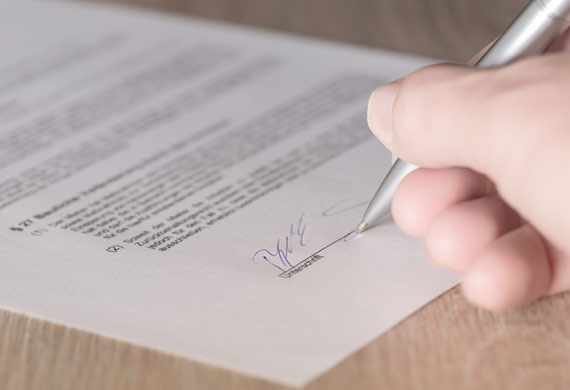Stop losing business deals to your competition when the tips to fix your proposal are simple.

Your business proposals must not only appeal to your prospective clients, but they must also capture and keep their attention by illustrating their definitive ability to solve their problem in the most direct way possible.
clashgraphics.com has gathered information to help you assemble the most appealing content and gives you the steps to write a winning business proposal for any product or service.
What Is A Business Proposal?
A business proposal is a written or digital collection of appealing information that introduces you, your company, your business ethics, your product, and your prices to another company that may benefit from your product or service.
There is no one-size-fits-all proposal. Your business proposal should be flexible enough to scale up or down depending on the company you want to do business with. The following steps will guide you through the creation of a versatile and winning business proposal.
Step 1 - Gather Relevant Information
When a promising business opportunity arises, you may feel pressured to send a business proposal as quickly as possible. However, reserving the necessary time to collect data about the business, their needs, and your competition will help you create a better overall proposal.
Before writing your proposal, answer the following questions:
Who Makes the Decisions? - Learn as much about the company and their decision making processes as you can. Knowing who is included in the selection process (CEO, CFO, COO, etc.) will help you tailor your proposal to be more appealing.

Are You Working Against a Deadline? - Many well-structured companies make their purchasing decisions during specific periods of the year. Make sure you ask questions about time constraints, budget cycles, and internal deadlines.
How Are You Going to Solve Their Problem? - Once you have a clear perspective of what the company’s problem is, you must decide which of your products or services are best suited to solve it efficiently.
Has the Company Established a Budget? - Ask about the company’s budget or anticipated investment for this product or service. The more you know about how much they are willing to invest, the better you can refine your proposal. In some cases, this information may force you to walk away when there is little to no chance to make a profit.
How Much Will You Invest in This Project? - Before sending your proposal, calculate your company’s expenditures versus the full contract value (FCV) if your proposal is accepted. By doing this, you can determine your company’s projected revenue.
Who Are You Competing Against? - If you are entering into a competitive bidding process, take the time to research your competition. Knowing their strengths and weaknesses will help you highlight how your products and services can better solve the company’s problem.
Step 2 - Define The Project Scope
The scope of your project is a blueprint of how the products and services will be delivered and is as essential for you as it will be for your prospective client. It will also help you determine whether or not you have the necessary resources and logistics in place to fulfill the commitments you are proposing.
The following questions and their answers will help you define the project scope:
Who?
Who will oversee/manage the work?
Who will be tasked to do the work?
Who will the customer call for problems and troubleshooting?
Who will be responsible for billing?
What?
What service or product is being promised?
What time/manpower will be required to deliver it?
What will your customer expect weekly or monthly?
What will all of this cost the client?
Where?
Where will the work take place?
Where will products be delivered?
When?
When will the project begin?
When will the project end?
When will payments be due?
When will contract renewal be negotiated?
How?
How will work deadlines be met?
How will the work be managed?
How will you guarantee product quality?
How will you determine customer satisfaction?
How will your product or service solve your customer’s problem?
Why?
Why did you choose this project?
Why did you choose the product or service as the solution?
Why should you be selected?
Answering these questions will give you insight into your company’s ability to honor the proposal’s requirements, as well as expand or grow to meet its needs.
Step 3 - Draft Your Business Proposal
You can personalize an unsolicited business proposal to appeal to a specific customer. There are no set standards unless you are responding to a solicited RFP (more on this below). Throughout your proposal, never make promises you cannot keep and be realistic about your product and service.

Ethos, pathos, and logos are related terms used in business proposals. Ethos refers to the credibility of you and your company, pathos refers to the passion and enthusiasm used to represent your company, and logos to the logic or reason used when making business decisions or proposals.
With these ideas in mind, the general flow of your proposal should include the following:
Introduction - Relevance is essential when introducing your company and its mission. The introduction tells a story about your company, product, services, and brand. Be sure to highlight your credentials, accomplishments, and what distinguishes your company from your competitors. The length of your introduction should be relative to the relationship you want to build with your potential client, but no more than one page.
Executive Summary - This is not a detailed summary of the proposal, and should also be kept to a single page. This is where you pitch your reasoning for why your company should be selected while offering the takeaway message of the proposal. Use objective language to focus on the conclusions the reader should reach after reading the proposal.
Table of Contents - Unless directed to do so by the requirements of an ‘RFP,’ or you are assembling a proposal with a lot of detail, inserting a table of contents is optional and in most cases unnecessary.
Body - The body of your proposal is where you get to expound on what you stated in the Executive Summary and provide the answers to the questions about the project scope.
The following can be used to fill the body of your proposal:
• Project Timeline
• Project Pricing
• Project Logistics
• Market Analysis
• Marketing Plan
• Graphs and Data Charts
• Financial Projections
• Client Testimonials
• Website and Social Network Links
The body is where you should include your company’s limitations or “terms.” While it may not seem necessary, without doing so, your prospective customer may develop expectations for your company to provide services outside the scope of the proposal.
It is common practice to end the body of a proposal with a signed agreement that facilitates the closing of the contract. By adding this agreement, your proposal will double as a contractual agreement.

Conclusion/Call to Action - Conclude your proposal by emphasizing the benefit your company brings to the table, and encouraging the reader to take action. Even in the simplest form by visiting your website for further information, contacting you for further details, or by detailing how to close the deal and begin the terms of the contract.
Appendix - The appendix allows you to showcase material that may not have been appropriate for other sections of the proposal. The following can be added to your proposal’s appendix:
• Resumes
• Certifications
• Awards
• Additional Graphs
• Additional Customer Testimonials

For guidance on how to write a winning resume, visit clashgraphics.com/printing-tips/how-to-write-winning-resume/. For help with graphic design, layout, and professional printing options, contact clashgraphics.com/pages/print-shop-in-atlanta-ga.html
What Is an RFP?
Business proposals are sometimes solicited through a request for proposal (RFP). This document requests proposals for an agency interested in the procurement of a service, asset, or commodity.
RFPs will generally be specific on how proposals are to be structured and what information should be included. In these business proposals, do not deviate from the given instructions. If you are writing a proposal for an RFP, please refer and adhere to the guidelines in the RFP.
Step 4 - Editing Your Business Proposal
Never send a first draft proposal to a prospective customer. Typos, grammatical missteps, and calculation mistakes can be enough to get your proposal eliminated before it even gets to the review table.
A second set of eyes will help you catch mistakes that you may overlook. As well, there are several online editing programs like Grammarly which can help you fine tune the proposal’s vocabulary, spelling, and grammar.
During the editing process, work to remove repetitive or information which may not be necessary for your proposal. By keeping your proposal concise (without sacrificing valuable content), you are giving it a better chance at winning the selection process.
Also while editing, read the proposal from your potential client’s point of view and ask:
• Is the information clear and concise?
• Is the tone of the proposal professional and using industry vocabulary?
• Is the call to action compelling?
• Would you sign the proposal into a contractual agreement?
Step 5 - Submitting Your Proposal
Depending on the content of your proposal, and the delivery requirements of the company it will be submitted to, the following delivery options should be addressed:
Email - When sending a business proposal via email, there are a few things you should take into consideration:
• Who is the recipient, who will be copied, and will there be anyone blind copied?
• Is your subject line populated with direct and brief language?
• Is there a size limit for email attachments with your or the customer’s service?
• Be prepared to change the document format to accommodate a size limitation?

If your email provider offers a “read receipt” turn it on so you’ll be notified when the email has been opened. This will help you determine a time to follow up with your potential customer.
Portal - In many cases, the customer or entity requesting the proposal may have an online portal set up. Portals are advantageous as they can handle larger file sizes, permitting more thorough proposals to be submitted.
If this is the case, all of the documents comprising the proposal can be named and uploaded to the portal for the reviewers to see at their discretion.
Hand Delivery - Some companies (especially those issuing an RFP) will request that multiple copies of your proposal be hand delivered by a particular deadline.
Mail - Finally, there are times when your proposal will have to be mailed using USPS, UPS, FedEx or courier, and stamped by a specific deadline.
Increasing Business with Winning Proposals
Don’t miss business opportunities when there are references and easy to follow proposal writing instructions.
In this article, you discovered the necessary steps and content to write a captivating and winning business proposal.
Your failure to efficiently write, assemble, and deliver a winning business proposal can cost your company significant revenue and prevent its ability to grow.
Sources:
http://jsmith.cis.byuh.edu/books/communication-for-business-success/s13-03-business-proposal.html
http://kmh-lanl.hansonhub.com/pc-26-58-seisler.pdf
https://www.score.org/blog/8-ways-make-your-business-proposal-stand-out
Clash Graphics Print Shop Atlanta Flyer Printing
2233 Peachtree Rd NE Ste 202 Atlanta, GA 30309
(678) 235-3464
To view the original version on Clash Graphics, visit: https://www.clashgraphics.com/printing-tips/5-steps-writing-winning-business-proposal/